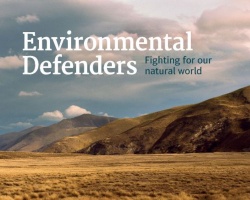Anzac in Motion on New Sights and Sounds Website
FOR IMMEDIATE RELEASE
Experience Anzac in Motion on New Sights and Sounds Website
From 30 March a new website, www.anzacsightsound.org, will enable visitors to experience the Sights and Sounds of the Anzac corps and the World War I era. A curated selection of archival films, songs, recorded interviews, documents and photos have been expertly restored and digitised for the website.
The website, titled Anzac: Sights and Sounds of World War I, has been produced in partnership by Ngā Taonga Sound & Vision and the National Film and Sound Archive of Australia (NFSA). It has been generously funded by the New Zealand Lottery Grants Board World War One Commemoration Fund.
The website highlights newly scanned and digitised film and audio items. New content will be added regularly during the Centenary period (2015 - 2019). Funding was also received to research, identify, or repatriate World War I material featuring New Zealanders home from archives overseas. As it becomes available this new content, some of it unseen for 100 years, will be added to the website. Initial highlights amongst the selection of audio and film recordings currently available on Sights and Sounds include:
• The moving Otago Expeditionary Force (1914) depicts a sea of soldier and civilian faces saying their farewells at the departure of the Otago Regiment.
• Heroes of Gallipoli (1915, loaned from the Australian War Memorial) features rare filmed footage of the Gallipoli campaign, including scenes shot at Anzac, Cape Helles and Sulva Bay.
• Cartoons of the Day (1915 - 1916), by Australian sketch artist Harry Julius, provides a satirical commentary of World War I.
• Mrs Barnard (1965) is interviewed about her gargantuan gingernut-baking feat (four and a half tons) to fundraise for the war effort.
• Taanga Tomoana interviewed (1968) on how his father, Paraire Hēnare Tomoana, came to write the lyrics for E Pari Rā, a popular World War I waiata that was adopted by the New Zealand Navy and Air Force as their official song.
• A range of oral histories from soldiers who served at Gallipoli talking vividly about their experiences, the hardships they faced, as well as some of the lighter moments.
Continuing the Anzac tradition of cooperation between Australia and New Zealand, the Sights and Sounds project has allowed the NFSA and Ngā Taonga Sound & Vision to draw comparisons and point out differences in terms of how each country experienced World War One.
Ngā Taonga Sound & Vision Acting Chief Executive Rebecca Elvy said: “The film and sound items on Sights and Sounds bring the past to life in poignant ways. We are excited to be able to deliver this material via the web, opening it up for use in education, by community groups, and in a range of other contexts, to be shared and discussed by anyone interested in World War I. Previously only experienced on special occasions, these film and sound recordings will now be available for everyone.”
Head of Audience Diane Pivac adds: “Through Sights and Sounds we are hoping to convey a real, tangible connection to the past. The content has been carefully selected to give visitors a very real sense of the people whose lives were transformed by the war, and to illustrate how much our societies changed between 1914 and 1919.” “ The power of our audiovisual collection is its ability to take us back to a particular moment in time, and see and feel that world. The footage on Sights and Sounds gives you a chance to picture yourself walking along the wharf next to the departing troop-ships, throwing streamers as they leave the dock, sharing the sense of anticipation and excitement that was felt by those travelling overseas for the first time. On this website you get to sing their songs, and look at those years through their eyes,” said NFSA Senior Curator Jennifer Coombes.
Ngā Taonga Sound & Vision and the NFSA invite all New Zealanders and Australians to explore these Sights and Sounds following the website launch on 30 March. They represent a defining moment in the history of both nations and as such, belong to all of us.
ENDS
BACKGROUND
INFORMATION
About Ngā Taonga Sound & Vision
Ngā Taonga Sound & Vision is the operating name for the New Zealand Archive of Film, Television and Sound Ngā Taonga Whitiāhua Me Ngā Taonga Kōrero. The archive cares for a diverse collection of moving image and audio items. These date from 1895 and span New Zealand’s sound and moving image history – from the earliest days of cinema, audio recording and television, to contemporary film, television, advertisements, music videos, computer games and radio productions.
About The National Film and Sound Archive of Australia
The
National Film and Sound Archive of Australia is a “living
archive” – collecting, preserving and sharing the
nation’s audiovisual heritage. The NFSA is the custodian
of the Australian audiovisual collection, which contains 2.1
million items spanning over 100 years of creative production
in film, sound, and broadcast. The collection includes every
audiovisual format
imaginable.


 Environmental Defence Society: Groundhog Day, New Book Shows History Is Repeating Itself
Environmental Defence Society: Groundhog Day, New Book Shows History Is Repeating Itself NZEI Te Riu Roa: Mandated Single Approach To Reading Will Not Work
NZEI Te Riu Roa: Mandated Single Approach To Reading Will Not Work The Conversation: Could The School Phone Ban Work?
The Conversation: Could The School Phone Ban Work? Public Health Communication Centre: To Avoid A Measles Epidemic, Aotearoa Must Close The ‘Immunity Gap’
Public Health Communication Centre: To Avoid A Measles Epidemic, Aotearoa Must Close The ‘Immunity Gap’ Heritage New Zealand: Kid-friendly Archaeology Resource Kit Launched As Part Of Archaeology Week
Heritage New Zealand: Kid-friendly Archaeology Resource Kit Launched As Part Of Archaeology Week Tatai Aho Rau Core Education: Cyber Skills Programme For Tamariki Recognised At Māori Language Awards
Tatai Aho Rau Core Education: Cyber Skills Programme For Tamariki Recognised At Māori Language Awards